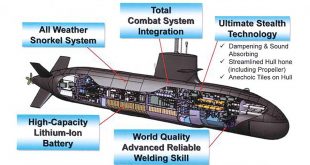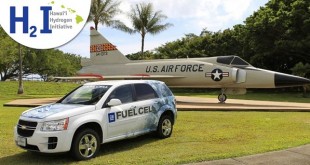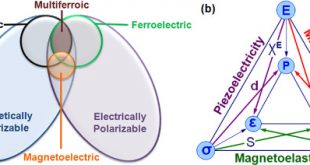The Defense Advanced Research Projects Agency (DARPA) is soliciting innovative proposals in maritime communications with an emphasis on undersea and cross-domain (above sea to below sea and vice versa) communications. The Defense Advanced Research Projects Agency wants to build an undersea network so that the military can have situational awareness …
Read More »Countries plan high endurance and stealthy diesel-electric submarines equipped with batteries
Naval Warfare depends a large extent on lethality and survivability of submarines, its principal weapon, therefore Navies have been researching new ways to make them quieter and increasing their underwater endurance. Propulsion system plays an extremely important role in the functioning of a submarine for the completion of its desired …
Read More »G/ATOR, a three-dimensional Multisession AESA Radar to detect and fire low-observable targets, will be integrated with the Integrated Air and Missile Defense (IAMD) System
G/ATOR is an expeditionary, three-dimensional, short- to medium-range multirole X-band radar system designed to detect low-observable, low-radar cross-section targets such as rockets, artillery, mortars, cruise missiles, and unmanned aircraft systems. The Ground/Air Task Oriented Radar (G/ATOR) is a single materiel solution for the mobile Multi-Role Radar System and Ground Weapons …
Read More »DARPA SC2 challenge use AI to optimize spectrum usage in Wireless Networks and Adaptive Radios to cooperatively share or dominate congested spectrum
Ongoing wireless revolution is fueling a voracious demand for access to the radio frequency (RF) spectrum around the world. In the civilian sector, consumer devices from smartphones to wearable fitness recorders to smart kitchen appliances are competing for bandwidth. Around 50 billion wireless devices are projected to be vying for …
Read More »DARPA ElectRx developed automatic Self-Healing of Body by stimulating nerves by light, electricity, sound and magnets
Service members are subject to extreme physical injury and mental stress. Wounded soldiers often experience substantial pain, which must be addressed before returning to active duty or civilian life. Pain represents a serious and widespread problem both over the short term for wounded soldiers on the battlefield and during rehabilitation, …
Read More »DARPA BOLT developing handheld device that can translate Language in real time
Being able to converse with people who don’t speak English is essential for the Army, since every day, Soldiers are partnering with militaries in dozens of countries around the world. A number of speech-translator devices are available commercially, and Soldiers have been using them. However, speech translators are seldom completely accurate …
Read More »Swarm technologies enable militaries to employ them for ISR, force protection and precision firepower
Criminals and militants have now started using swarm of commercial available drones thereby engancing their effectiveness and lethality. Military is also developing swarms for many applications including ISR, decoys or as swarm of weapons. Swarms are expected to be effective even in A2/AD environments. Instead of being individually directed …
Read More »US DOD developing Fuel Cells to power Military Vehicles, UAVs , Submarines, Military Bases to Soldier wearables
A fuel cell is a device that generates electricity by a chemical reaction. It converts hydrogen and oxygen into water, and in the process also creates electricity. Fuel cells provide many advantages, they are environment friendly as they don’t produce pollutants or greenhouse gasses, significantly improving our environment, high energy efficiency ( …
Read More »Multiferroics and spin-orbit materials for Internet of things and AI
The need for more energy-efficient computers is urgent. The Department of Energy projects that, with the computer chip industry expected to expand to several trillion dollars in the next few decades, energy use by computers could skyrocket from 3 percent of all U.S. energy consumption today to 20 percent, nearly …
Read More »Optical or Photonic sensor technology incomparable for detection of biological, chemical and nuclear agents, structural damage, and military wearables
Sensors allow humans to feel and understand their world, and their development lays the foundation for the fulfillment of information society and has formed a huge industry. Photonic sensors are defined as sensors that sense, emit, receive and convert the light energy into electrical signals. Photonics sensors deal with the …
Read More » International Defense Security & Technology Your trusted Source for News, Research and Analysis
International Defense Security & Technology Your trusted Source for News, Research and Analysis










